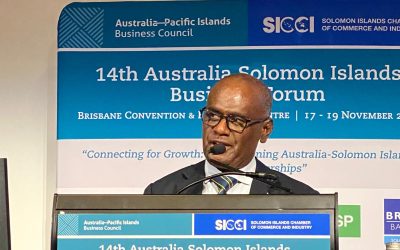Australia is stepping up its aid commitments to the Indo-Pacific region, redirecting resources and reshaping its development strategy in response to significant cuts in U.S. foreign assistance. The move comes as the Albanese Government prepares to navigate a shifting geopolitical landscape where Australia’s development role is increasingly critical to maintaining regional stability and influence.
In its 2025–26 federal budget, Australia has allocated just under AUD$5.1 billion (US$3.21 billion) for development assistance—a modest increase of AUD$136 million (US$85.7 million) from the previous financial year. However, the pivot is more than a budget bump; it reflects a strategic recalibration of where and how Australia delivers its aid.
Foreign Minister Penny Wong has tasked the Department of Foreign Affairs and Trade (DFAT) with identifying urgent shortfalls caused by declining U.S. funding, especially in sectors such as public health and climate action. Notably, an additional AUD$5 million (US$3.15 million) will go toward maintaining HIV prevention and treatment programmes in Papua New Guinea, Fiji and the Philippines—a direct response to recent reductions in the U.S. President’s Emergency Plan for AIDS Relief (PEPFAR) funding.
As part of the shift, Australia is reprogramming AUD$119 million (US$75 million) away from multilateral aid contributions and toward targeted bilateral and regional initiatives. Among the key areas of focus are:
- A five-year AUD$1 billion (US$630 million) initiative to support economic resilience in the Indo-Pacific.
- A three-year AUD$370 million (US$233 million) humanitarian package in response to the ongoing crisis in Myanmar.
- A four-year AUD$355 million (US$223 million) climate disaster and preparedness fund to build resilience across Pacific Island countries vulnerable to cyclones, rising seas and flooding.
While these moves have been welcomed by Pacific leaders and aid advocates, there is concern that Australia’s overall commitment still lags behind global benchmarks. According to Islands Business, Australia’s aid-to-Gross National Income (GNI) ratio has declined to just 0.18%, placing it firmly in the “0.2 club”—a group of OECD donors contributing less than 0.2% of their GNI to overseas development assistance.
Despite a planned annual aid increase of 2.5% over the next decade, experts note that inflation and currency fluctuations could erode the real value of these commitments. Aid organisations have urged Canberra to set a path toward reaching the long-standing international target of 0.7% of GNI, which would better reflect Australia’s economic capacity and international responsibilities.
For now, however, Australia’s pivot to the Pacific signals a more deliberate effort to assert regional leadership through infrastructure, health, and climate resilience funding—an effort made more urgent by the withdrawal of one of its traditional allies from the field.



